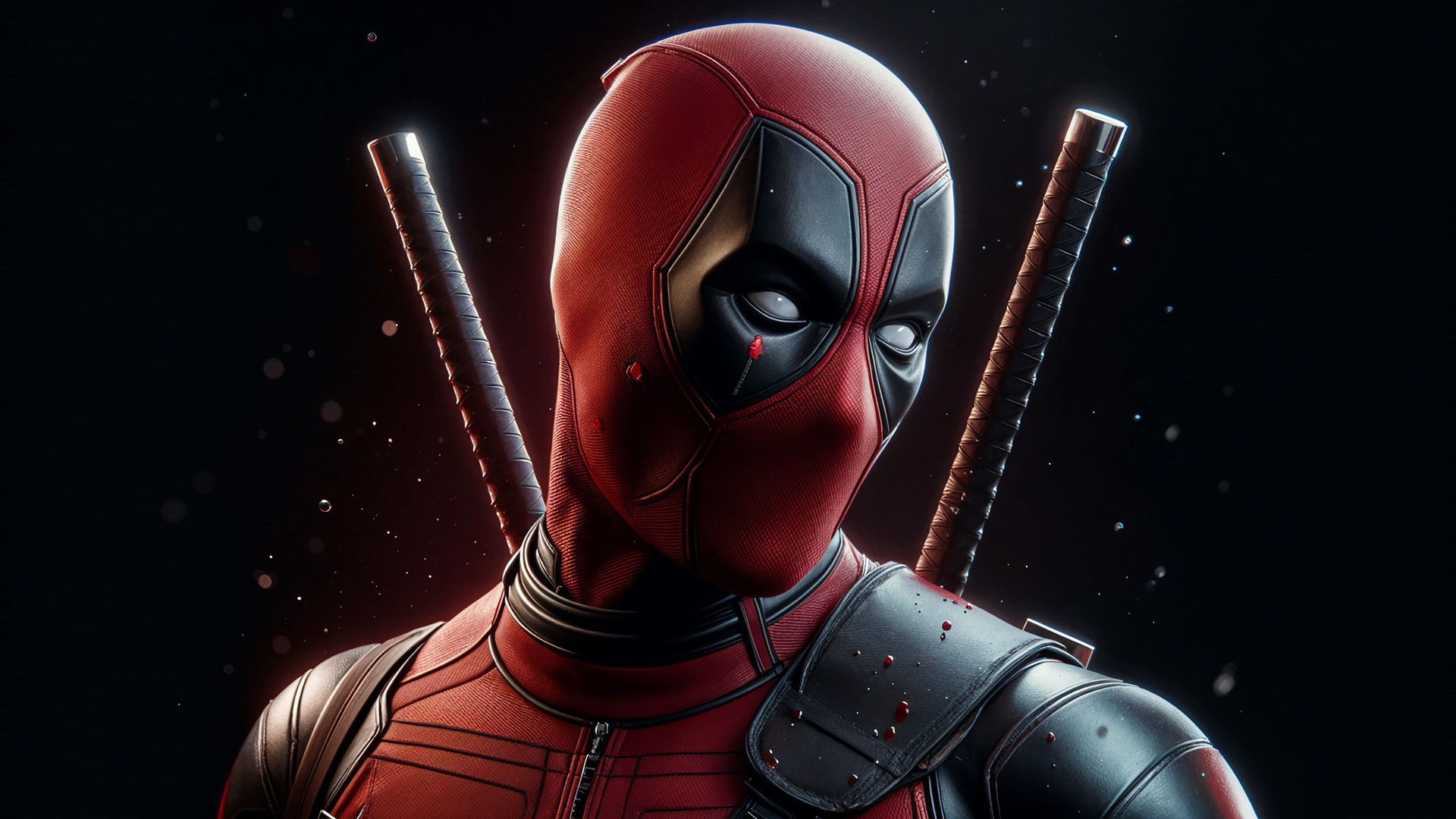A Superhero Like No Other
Deadpool burst onto the scene in 2016 and instantly redefined what audiences expected from superhero films. While the genre typically follows a formulaic path—complete with serious heroes, world-saving stakes, and inspiring speeches—Deadpool turned these conventions on their head. The titular character, played by Ryan Reynolds, broke the mold with his irreverent humor, R-rated antics, and most notably, his frequent breaking of the fourth wall.
Deadpool’s self-awareness, where he knowingly speaks to the audience and references his own existence as a fictional character, sets him apart from traditional heroes like Spider-Man or Batman. This playful interaction with viewers made the film a game-changer, offering not only action-packed sequences but also a new way of engaging the audience. In this exploration, we’ll dive into how Deadpool’s use of fourth-wall-breaking revolutionized the superhero genre, blending humor with a unique narrative style that reshaped audience expectations.
What is the Fourth Wall?
The “fourth wall” is a term originating from theater, referring to the imaginary barrier between the actors on stage and the audience. In most films and plays, characters pretend that the audience does not exist, maintaining the illusion of reality. However, when characters “break” the fourth wall, they acknowledge the audience directly, disrupting this illusion and bringing viewers into the story in a new, often humorous way.
Historically, breaking the fourth wall has been used sparingly in cinema. Charlie Chaplin would occasionally acknowledge the audience in his silent films, while Ferris Bueller famously broke it throughout Ferris Bueller’s Day Off. These early examples paved the way for Deadpool, which took the concept to new heights. Unlike films that break the fourth wall in isolated moments, Deadpool integrates it consistently into the narrative. Deadpool doesn’t just acknowledge his audience—he brings them into the joke, transforming the way superhero stories are told and making them feel more interactive. This self-aware storytelling not only disrupts traditional film conventions but also enhances the humor and engagement of the film.
Deadpool’s Playful Interaction with the Audience
From the very beginning of Deadpool (2016), it’s clear that the film is not going to follow the typical superhero formula. One of its standout features is how Deadpool constantly breaks the fourth wall to talk directly to the audience, creating an ongoing dialogue that sets a playful, irreverent tone. Whether he’s cracking jokes about the movie itself, commenting on its budget, or even poking fun at the very studio that made the film, Deadpool turns the fourth wall break into a narrative tool that enhances the comedic experience.
One memorable moment is when Deadpool, frustrated by the lack of X-Men cameos, looks at the camera and says, “It’s almost like the studio couldn’t afford another X-Man.” This not only provides a meta-commentary on the film’s production but also draws the audience into the joke, making them feel like they’re in on the fun. Another instance is when he literally turns to the camera to explain his origin story mid-action, blending exposition with humor in a way that keeps the plot moving while keeping viewers entertained.
These moments of breaking the fourth wall build an unusual camaraderie between Deadpool and the audience. By constantly interacting with them, Deadpool blurs the line between character and viewer, creating a more immersive and interactive experience. This unconventional storytelling approach adds layers of humor while keeping the audience engaged in the chaotic world of Deadpool.
Subverting the Superhero Genre: Why It Works
Deadpool’s self-awareness and constant meta-commentary serve as both a love letter to and a satire of the superhero genre. Unlike traditional superhero films that take themselves seriously, Deadpool flips the script, offering a fresh take that pokes fun at everything from superhero tropes to the very idea of being a hero. By constantly breaking the fourth wall, Deadpool not only mocks the conventions of the genre but also shines a light on its often repetitive narratives. This approach invites the audience to laugh at the predictability of superhero stories while still delivering the action-packed thrills they expect.
Compared to films like The Avengers or Man of Steel, which follow the classic hero’s journey, Deadpool unapologetically ridicules these tropes. For example, Deadpool’s origin story is intentionally over-the-top, with the character himself commenting on how overused and cliché superhero origin stories are. This self-referential humor allows the film to stand out, making it both a part of the superhero genre and a critique of it. The irreverent tone keeps the story fresh, engaging fans who may have grown tired of the more formulaic offerings in the superhero canon.
What makes Deadpool’s approach particularly effective is that it manages to critique the genre while still delivering the excitement, humor, and character development audiences crave. It strikes the perfect balance between satirical commentary and traditional superhero fun, allowing it to appeal to both fans of the genre and those who are ready for something different.
Blurring the Lines: Mixing Fiction with Reality
One of Deadpool’s most unique features is its ability to blur the boundaries between the fictional world of the movie and real-life pop culture. The character frequently steps outside the story to make quips about the film industry, actors, and popular media, giving the audience a sense that Deadpool is as much a part of their world as he is of his own. This blending of fiction and reality creates a heightened sense of connection between the character and the viewers, making the film feel more interactive and unpredictable.
Deadpool’s playful commentary on real-world topics is on full display in scenes where he references Ryan Reynolds (the actor playing him) or jokes about the convoluted timelines of the X-Men franchise. He even comments on the low budget of the film, adding a humorous layer of self-awareness. This willingness to poke fun at itself and the film industry adds to the film’s charm, making the audience feel like they’re in on the joke. By breaking down the barriers between the audience and the movie, Deadpool gives viewers a sense of involvement, as if they’re watching a film with a friend who has an inside scoop on everything happening in Hollywood.
This technique not only enhances the humor but also makes Deadpool feel fresh and relevant to modern audiences. The film’s references to pop culture, the film industry, and even its own production keep viewers engaged, as they never quite know when Deadpool will step out of the narrative and address them directly. This unpredictability keeps the audience on their toes and strengthens their connection to the film.
The Influence of Deadpool on Modern Cinema
Deadpool’s overwhelming success didn’t just surprise audiences—it shifted the landscape of modern cinema. Its innovative use of fourth-wall-breaking humor, self-awareness, and meta-commentary resonated with viewers in a way that few superhero films had before. As a result, Deadpool opened the door for other films and TV shows to experiment with similar techniques, proving that audiences appreciate humor that plays with genre conventions and speaks directly to them.
One of the most notable examples is the TV show Fleabag, where the protagonist frequently breaks the fourth wall to comment on her life and the events around her. Like Deadpool, this direct address to the audience builds intimacy and humor, making the viewer feel as though they’re part of the story. Another more recent example is She-Hulk: Attorney at Law, where the titular character regularly steps out of the narrative to critique the conventions of the Marvel Cinematic Universe and comment on her own place within it. These examples show that Deadpool helped popularize a narrative style that makes audience engagement central to the viewing experience.
Within the superhero genre, Deadpool also influenced other films to adopt more irreverent tones, moving away from the overly serious, brooding characters of past blockbusters. Movies like Thor: Ragnarok embraced a more comedic, self-aware style that allowed them to explore traditional superhero plots in a more humorous, playful way. Deadpool’s success demonstrated that audiences enjoy a superhero who isn’t afraid to laugh at himself or the genre, leading to a new wave of films that blur the lines between satire and action.
The Fourth Wall as a Superpower
Deadpool revolutionized the superhero genre by using the fourth wall as more than just a narrative device—it became the character’s superpower. Through this technique, Deadpool not only redefined audience engagement but also created a unique space where humor and storytelling blend seamlessly. His ability to talk directly to viewers gave the film a fresh energy, making it stand out in a crowded genre.
By breaking down the boundaries between fiction and reality, Deadpool connected with audiences in a deeply personal way, keeping them invested in the character and



